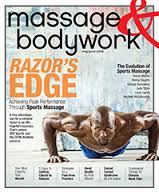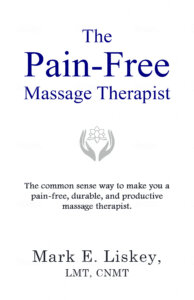When I was a kid, Dr. Grant made me feel better as soon as he walked into the examining room. He always had a smile on his face and I liked his fancy, red tie. Later in life I was shocked when I learned that his fancy, red tie could actually have been harmful to patients. A study showed that neckties worn by surgical technicians carried a lot more disease-causing pathogens on them than neckties of other hospital workers.
In massage, we have our own “fancy, red tie” oversight. The way you position a sciatica client on a massage table may seem unimportant. However, if positioned incorrectly, it may actually make the condition a whole lot worse.
Lower-Back Nastiness
Sciatica is irritation of a lower-back spinal nerve, and a sufferer may experience pain, numbness and/or muscular weakness in the buttock and legs. Pain can be intermittent or constant and depending on where the nerve compression or irritation is occurring (L4, L5, S1, S2 and S3), the symptoms can manifest in different places. For example, John, a sciatica client of mine, had pain that bent him over and traveled all the way down into his foot.
Body Position is Key
Since sciatica symptoms vary depending on where the spinal nerve is being compressed, no single body position will relieve symptoms for everyone. Some sciatica sufferers can’t find a comfortable sleeping position and constantly wake up at night. Others have less trouble sleeping but more pain when they’re sitting or standing. John had no problem standing, but ask him to sit and, during the acute phase, the pain was unbearable. On the table, the importance of body position is no different.
Beware of Prone
I’ve found that having a sciatica client in the prone position, especially for a long period of time, can aggravate the condition. In addition, a prone client leaves the door open for the MT to ratchet up the pressure. More pressure in the lower back/sacrum area could further tick off already angry nerves. Lastly, if you kick up the pressure, a sciatica client may not notice anything while on the table, but she’ll probably feel more pain once she’s up. Though John never said that lying facedown bothered his back, I limited the time he was facedown just to be safe.
Think Sleeping Position
If we limit facedown time during a massage, then we have to add in supine and/or side time. To determine which position is the best for the client, ask her: “Which position do you sleep in now?” Most will tell you either on their right or left side. The best sleeping position is your go-to position when working on the sciatica client. John’s sleeping position was his left side, and that’s the position I had him in when I did the majority of my work. Regarding supine, I can’t remember a sciatica client preferring face-up sleeping. But if so, it’s not impossible to work with your hands under the back while your client lies face-up.
Double-Check
Sometimes a client is not in tune with his sciatica pain and could be inadvertently giving you bad information. If you suspect this, do more digging. First, make sure he’s providing you with his best “after my sciatica acted up” sleeping position. Also, is he loading up on pain medication at night which is “allowing” him to be in a bad sleeping position? John knew exactly which sleeping position worked best for him—and so do most clients. But, if in doubt, opt for side-lying, and then pick a side. Check to see if the pain is increasing. If so, switch to the other side.
Change Positions
Working on a sciatica client in one position for the entire massage can irritate a back nerve. If facedown hurts the person from the get-go, choose best side-lying position for 60% to 70% of the time and then throw in the opposite side-lying position the rest of the time. If prone is okay, you can mix that in also. Here’s what body positioning on the table looked like with John: 50% left side (his “after my sciatica acted up” sleeping position), 25% right side, 25% face down.
Body Position Checklist
Body positioning is a simple and overlooked strategy to lessen the likelihood that you’re going to make a sciatica condition worse. Here’s a quick checklist that will help you to effectively manage body positions when working with sciatica clients. (1) Ask: Does lying facedown bother your back? (2) Ask: What is your most comfortable “after my sciatica acted up” sleeping position? (3) Double-check to make sure that the sleeping position information is accurate. If pain killers were used before bed and/or if you were given “when my sciatica is not acting up” sleeping positions, you have unreliable information. (4) Throughout the course of the massage have the client change body positions on the table. Give it a shot and please let me know if your sciatica treatment outcomes improve!
Need More Help?
Sign up for my email group and get my latest info. It’s free and you can unsubscribe whenever you want:-)







Comments on this entry are closed.